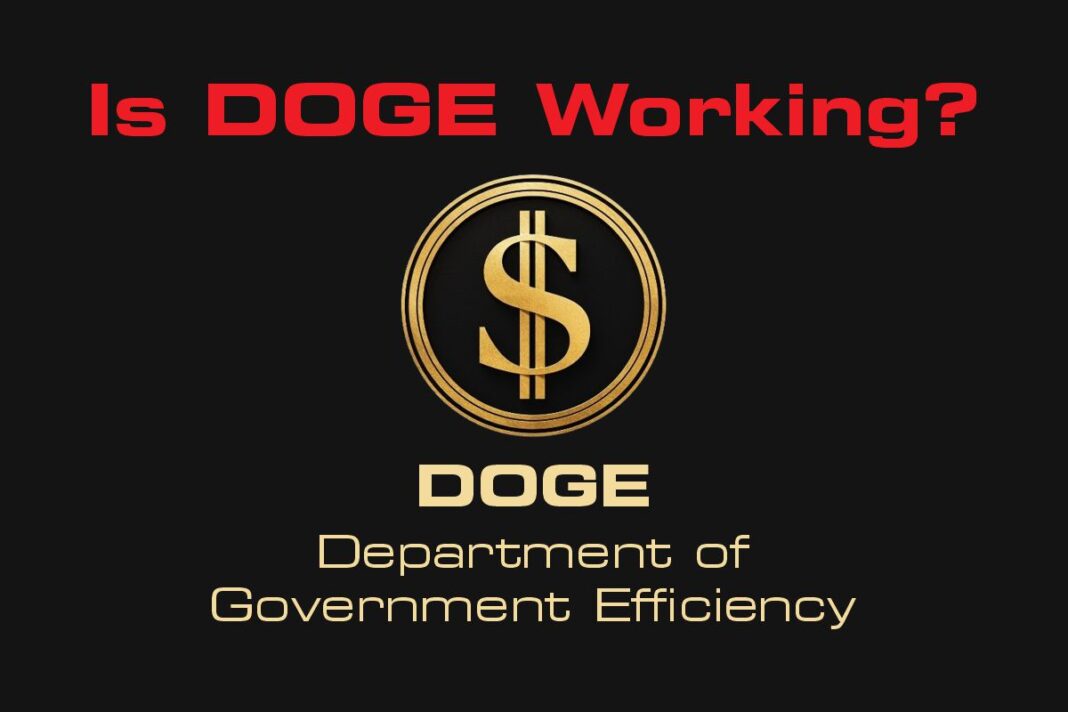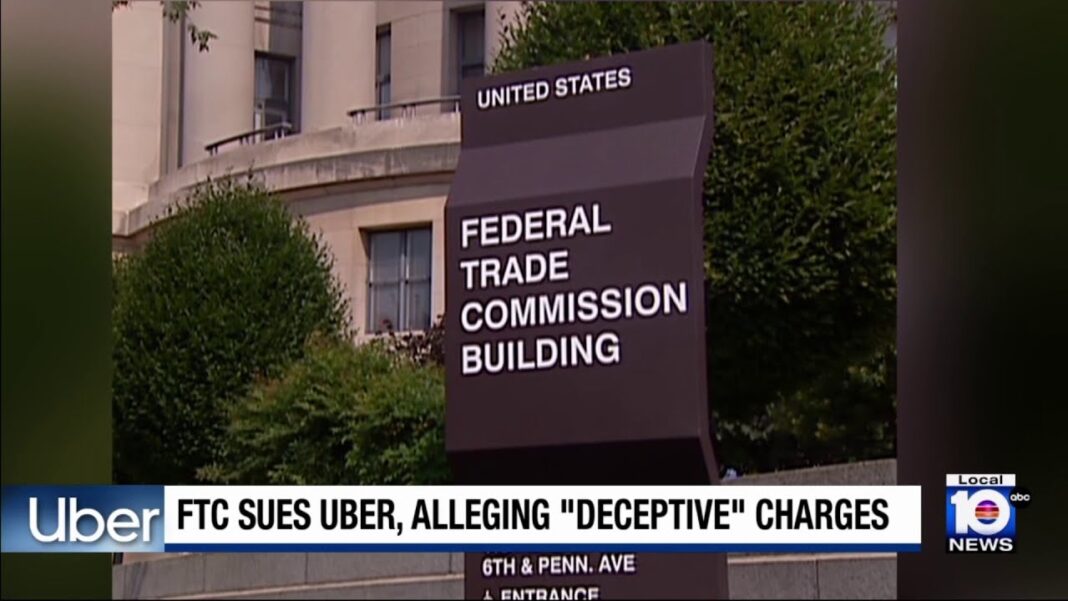The New York Times described Donald Trump’s 2015 theatrical descent on the escalator in Trump Tower as a man who was “repeatedly underestimated as a court jester or silly showman.” He was a man of bluster and bragging who had a deep desire to be taken seriously. He went on to win the presidency twice and became the most well-known person in the world. His Department of Government Efficiency (“DOGE”), on the other hand, had immediate national respect but is becoming the most well-known caricature in the world.
Elon Musk, the genius of our times, runs DOGE. Trump introduced DOGE as “The Manhattan Project of our time,” with a mandate to dismantle Government Bureaucracy, slash excess regulations, cut wasteful expenditures, and restructure Federal Agencies. It would complete this gargantuan task in eighteen months. The Manhattan Project was the code name for the American effort that utilized the world’s top scientific minds to develop a functional atomic weapon, ultimately ending World War II.
To fulfill its messianic mission, DOGE did not want “part-time idea generators.” It sought the top 1%, super high-IQ revolutionaries. Unlike Trump’s rise to greatness, DOGE is descending into the silly showman, full of bluster and accomplishing little. DOGE is a compendium of idioms:
It misses the forest for the trees (referring to someone who fails to understand the larger situation because they only consider parts of it.)
It’s too big for its britches (One who is conceited and has a too-high opinion of oneself).
All hat and no cattle (One who is all talk but no action.)
As a cavalier, chainsaw-wielding drama queen, DOGE (“Musk”) is not thinking that, after all the cutting is done, there must be a government that keeps the nation together. Governing requires leadership, persuasiveness, understanding of the nation’s problems, and, most importantly, instilling trust so the public feels confident in the management and direction of the country. While cutting the federal government is essential, creating a climate of fear in Social Security recipients, treating government workers as discarded, spoiled commodities, or viewing the personal information of Americans as dots on scraps of paper is not the process that instills trust in government. It is not a process that will permanently streamline government. It is not a process that enables the president to lead the nation effectively.
Many Americans recognize that the federal government is too large to be effectively managed. It has accumulated significant power and control over numerous political, social, and economic aspects of society, to the point where it struggles to distinguish its essential functions from trivial pursuits. Furthermore, the federal government has effectively reduced state and local governments to mere subjects of federal domination. The erosion of federalism has led to a mismatch of skills and a diminution of responsibilities at all levels of government, making the need for immediate action all the more pressing.
Many presidents before Trump established DOGE-style bodies that promised significant reforms but ultimately delivered larger budget deficits and substantial amounts of national debt. In Part II of my five-part series on DOGE, I discuss the many efforts to restructure the federal government, including the many serious reforms put in place to provide accounting, auditing, fraud investigative units, litigation support, and enhanced enforcement authorities, as well as Inspector Generals and Chief Financial Officers in every agency, to deal with waste, fraud, and abuse (“WFA”). All were enacted into law.
Of most significance are the GAO reports that identify the 37 most serious high-risk programs, which contain hundreds of billions of dollars in potential WFA. Moreover, all Presidents have been silent as the Pentagon, with an almost trillion-dollar annual budget, has failed seven yearly audits.
The flaw is not that the WFA was unknown to the groundlings in government. It is known, and Congress enacted laws to address it. The flaw is that no president has made the WFA a priority for enforcement. Starting a DOGE-style commission is a good press release, and its rash actions are worthy of cable commentary. However, the boredom of slugging it out to recoup the billions taken by fraudulent means is a step too far for the DOGE–style elites, who want immediate results, even if they are transitory after court review.
Instead of ripping apart the computer centers and firing agency staff, DOGE could have started on “Day One” to address the 37 high-risk programs identified by GAO for years. It could have recommended that the One Thousand unauthorized programs that Congress funds be repealed, due to a lack of interest from anyone in Congress. These two actions alone are estimated to cost the country $1 trillion. There is also the one trillion dollars the feds give to states to administer programs that the federal government lacks the authority to administer itself.
Alternatively, DOGE could have met with the relevant committees in Congress to compile a list of known, unworkable programs, agencies, and expenditures, and requested that those programs be repealed and that unneeded staff be subject to a reduction-in-force process. DOGE could have asked Congress to grant executive agency reorganization authority and included its “wish list” in a reorganization plan. If the Trump White House had put half the effort into a reorganization plan as it puts into DOGE, it could have enacted staffing cuts and expenditure reductions that would have survived court review. All would be permanent, rather than having a life span of an Executive Order.
In October 2024, before DOGE was formally established, it arrogantly proclaimed it could easily reduce annual federal spending by $2 trillion. By February 2025, it had reduced its claims to $1 trillion annually. By mid-April, DOGE lowered its claims to $150 billion for the Fiscal Year 2026. And now, Congress is seeking tax cuts that add another $ 7.8 – 9.1 trillion to the national debt.
More worrisome is that several investigative reporters reviewed DOGE’s website and musings on X (formerly Twitter) and found a pattern of deceit. Asset sales are one-time events, but are lumped in with annual savings. DOGE provides total savings for a series of cuts, but only itemizes 40% of the saved items. NPR found DOGE claiming savings of $16.5 billion but discovered the actual number based on confirmed cancellations to be $2 billion. DOGE lists a $1.9 billion IRS tech support contract with Centennial Technologies as a savings, even though it was terminated during the Biden administration. CBS News notes, “DOGE’s website claims … savings from contract and lease terminations, renegotiations, grant cancellations, layoffs, and other miscellaneous reductions, but DOGE has not supplied documentation for the vast majority of the savings claimed.”
DOGE claims to be the most transparent federal agency in history. Transparent in what respect? It is a series of disconnected statements and claims on a website that provides no coherent mechanism for response or auditing its calculations. DOGE is not as rigorous as the weakest agency’s notice-and-comment proceedings.
Fundamental structural reform of the government requires repealing federal power.
DOGE’s efforts to eliminate funding and reduce staff will only last as long as the Trump administration remains in place. As long as the underlying statutes remain in effect, the next administration could use those laws to rebuild whatever the Trump administration disassembles. Since DOGE has not worked with Congress, its efforts will be short-lived.
The federal government is de facto bankrupt. Within a decade, it will be forced to reduce or eliminate the trillion dollars in subsidies it gives to state and local governments to implement over a thousand programs that the federal government lacks the constitutional authority to enforce. If DOGE understands this reality, it should recommend restructuring the federal government by devolving federal domestic powers to the states.
As the powers are transferred to the states, Congress would repeal those federal powers. It will be up to the respective states to determine which federal laws they wish to continue and which laws they will allow to lapse. Since a significant portion of federal control over states is secured through grants to the states for implementing federal priorities, eliminating these laws would save the federal government almost $1 trillion annually. The states would then enact the eliminated federal laws that benefit their states using the monies saved by not having to implement the hundreds of federal programs unwanted by state and local governments.
DOGE can save trillions, but not by issuing press releases every time it finds a nickel or dime in the corner of an agency. DOGE needs to develop a government restructuring plan and present it like the government presented our war efforts with The Big Picture.
DOGE and Congress need to sell Americans on the idea of restructuring the government, not impose chaos.
Links to the Five-part DOGE series of articles:
Part Five: Utah Land Claim, Put Up or Shut Up – Time for DOGE to Shrink Government
Part Four: DOGE: Can’t Shrink Government Without Eliminating Its Power
Part Three: DOGE Its Enforcement Stupid Not Another Report.
Part Two: The Many Efforts by Predecessors of DOGE to Root Out WFA.
Part One: When DOGE Meets Political Chaos.
William L. Kovacs, author of Devolution of Power: Rolling Back the Federal State to Preserve the Republic. It received five stars from Readers’ Favorite. His previous book, Reform the Kakistocracy, received the 2021 Independent Press Award for Political/Social Change. He served as senior vice president for the U.S. Chamber of Commerce and chief counsel to a congressional committee. He can be contacted at wlk@ReformTheKakistocracy.com






